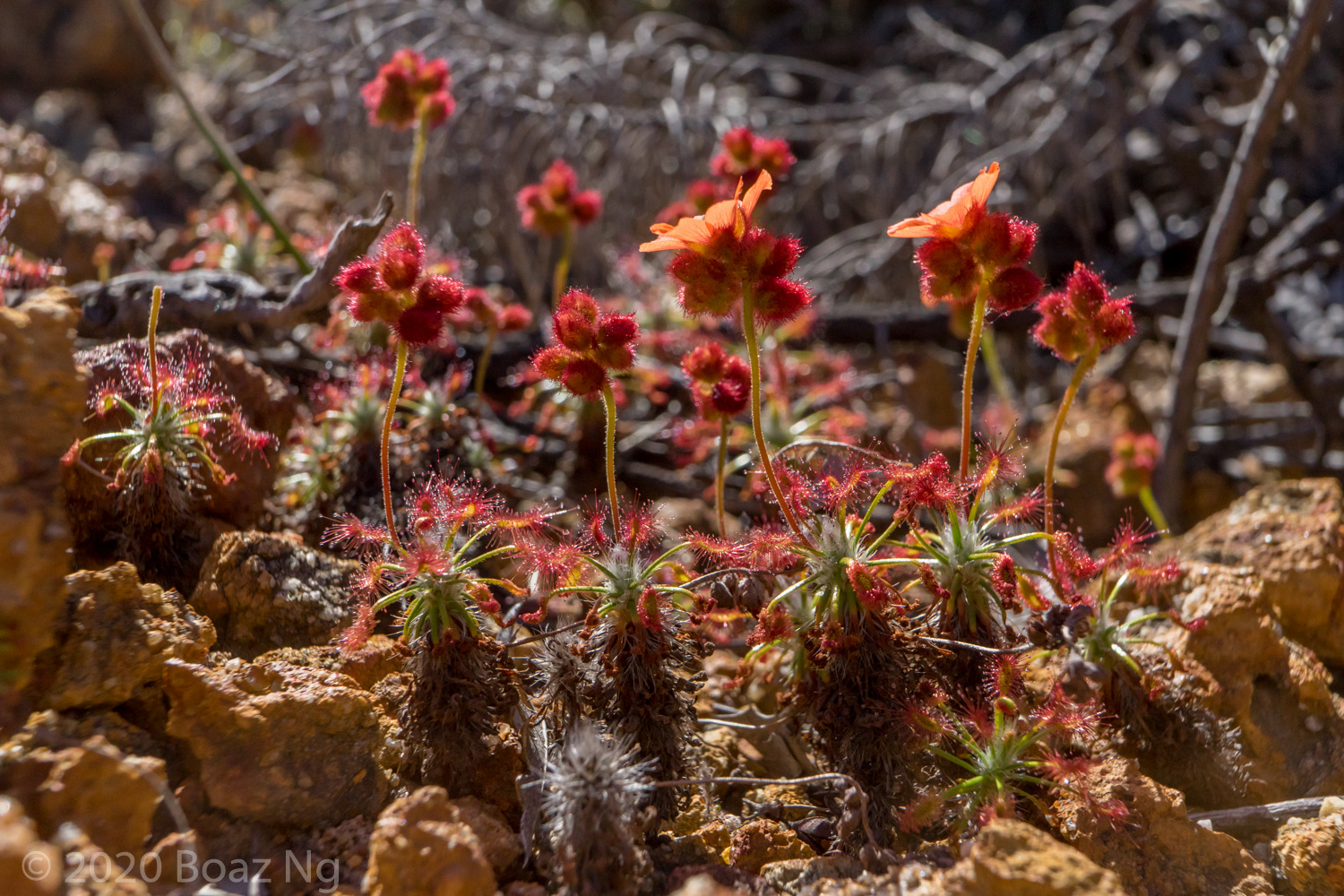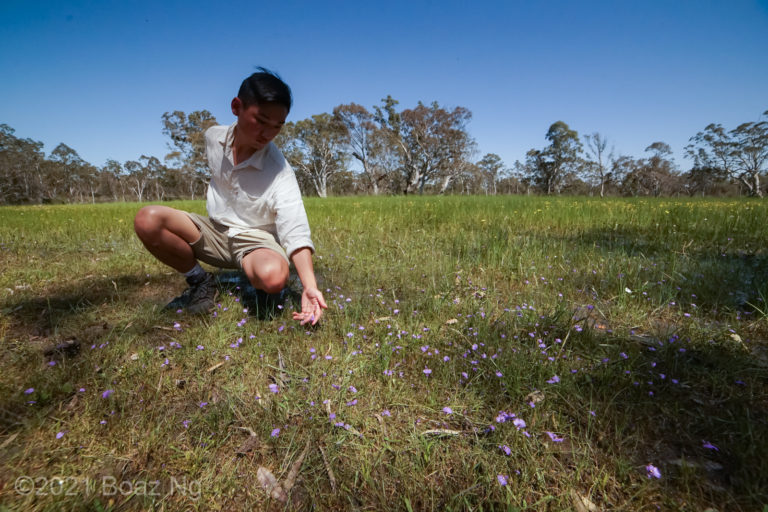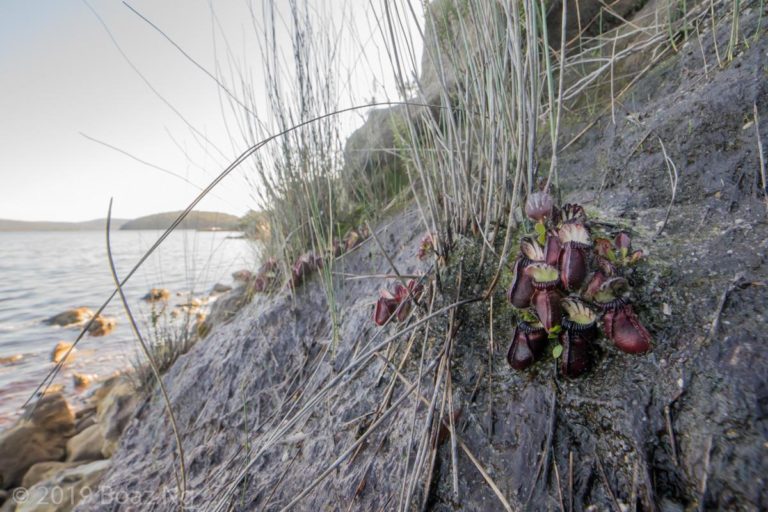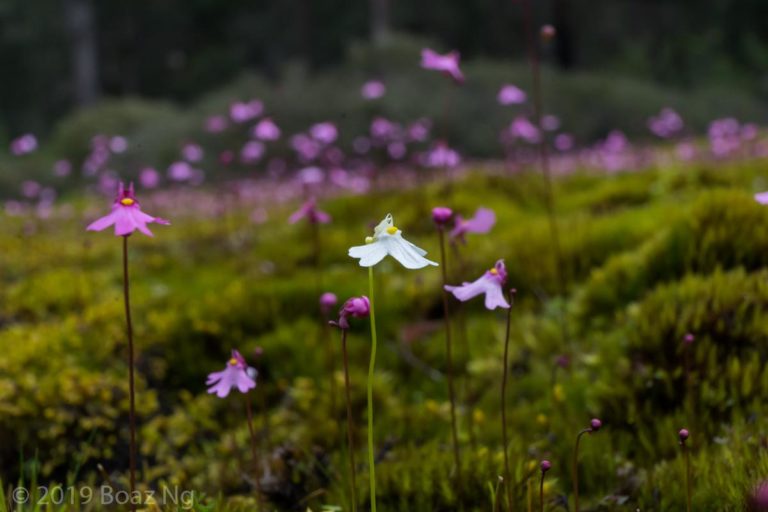At the end of winter in 2019 I embarked on an expedition to document the carnivorous plants of Western Australia. Over 17 days, I drove almost 3,500 km and photographed over 50 species in their habitat.
Previous: Part 6. Granite Outcrops and Salt Lakes
At this point I was feeling a bit burnt out, and a restless night in a dodgy metropolitan hostel certainly didn’t help. I had heard reports of interesting plants in the sand plains and laterite hills up north, so with little preparation and a quick breakfast, I sped out of Perth into the unknown. Whereas my circuit of the south west over the past 12 days was mostly mapped out prior to arriving, I had left the next section of the expedition unplanned.
My exploration of the north was mostly guided by a few sundews I wanted to find. With scant coordinates, I relied on random roadside stops and satellite imagery to identify sites, an approach which had served me well so far. The first species I wanted to find were D. magna, a giant cousin of D. erythrorhiza, and D. humilis, another plant in the stolonifera complex. I knew that both these plants grew generally in the sand plains, but I was frustrated to find that most of the roadside reserves were either military training grounds or loose coastal dunes that were mostly devoid of carnivorous plants.
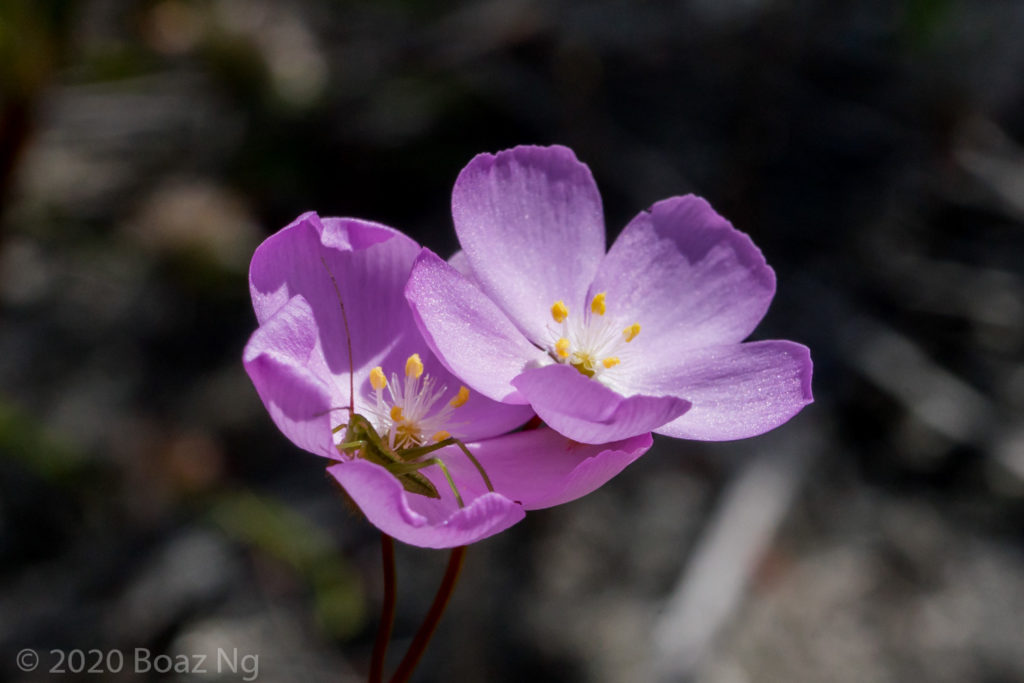
Drosera drumondii 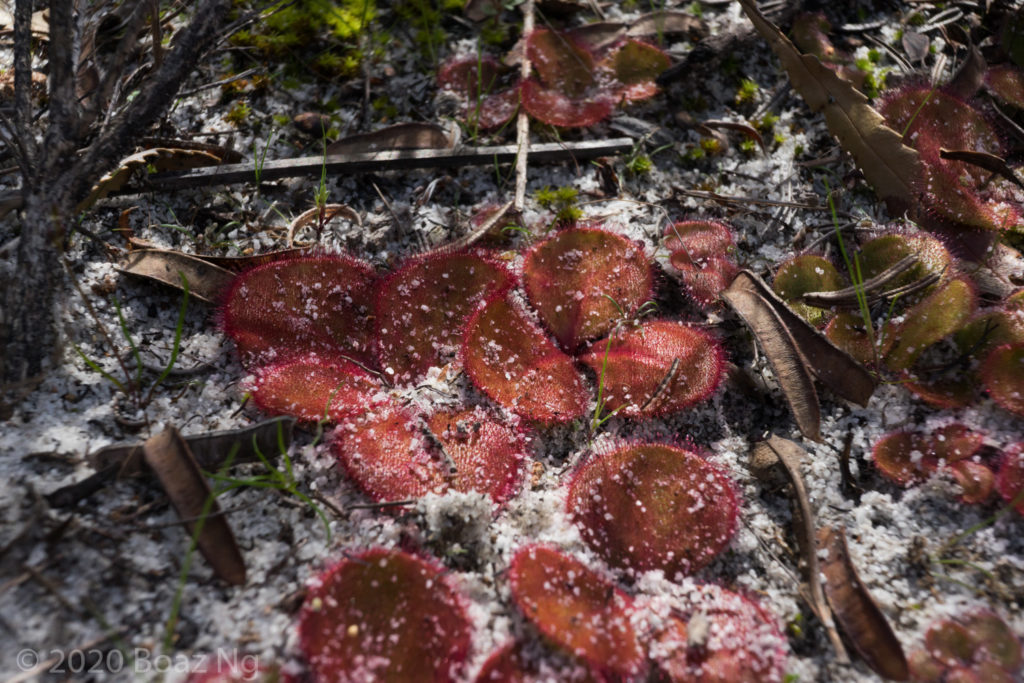
Drosera aff erythrorhiza near Cervantes
Finally, around 100 km out of town, I followed a service trail to an area of flat sandy heath and saw the welcoming pink blooms of D. drummondii all around me. I found some rosetted sundews scattered in the undergrowth, but was unsure whether they represented D. magna or D. erythrorhiza, as they weren’t particularly large.
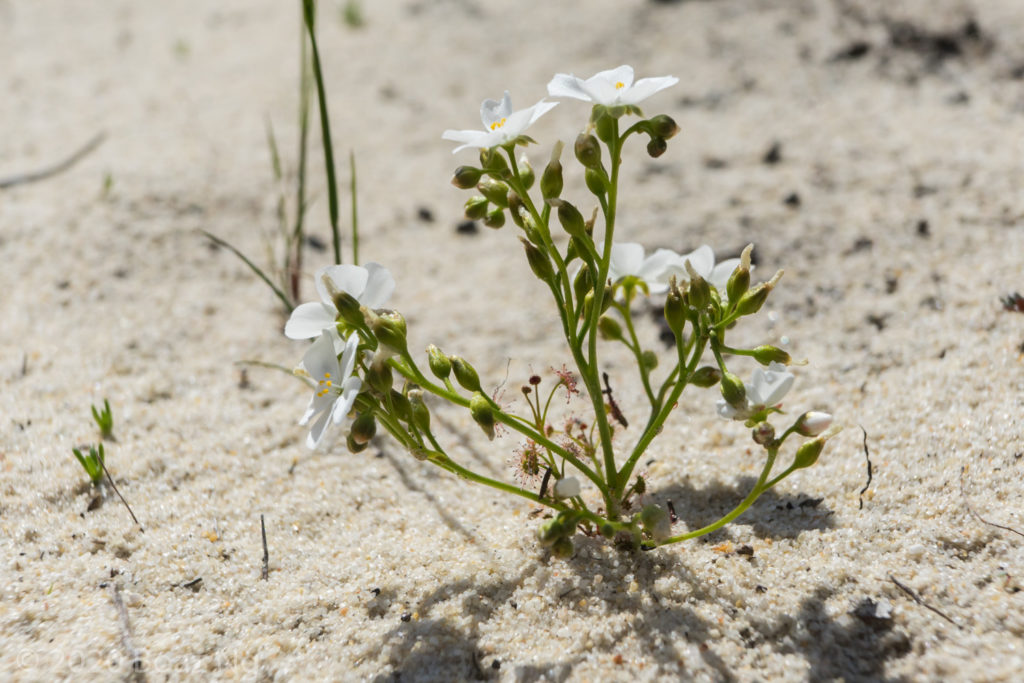
My quest to discover D. humilis was initially futile and I was just about to give up when it dawned on me that I might have been looking for the wrong thing. I recalled that the other fan-leaved sundews I had seen seemed to emerge late in the season so perhaps it was too early to find fully developed plants? Retraining my eyes, I quickly noticed clusters of fleshy flowers poking out of the ground and came to the realisation that they were the blooms of D. humilis! Like a veil had been lifted, I saw that the flowers were everywhere, and the plant that I was so earnestly looking for was right in front of me all along. It just turned out they hadn’t grown leaves yet.
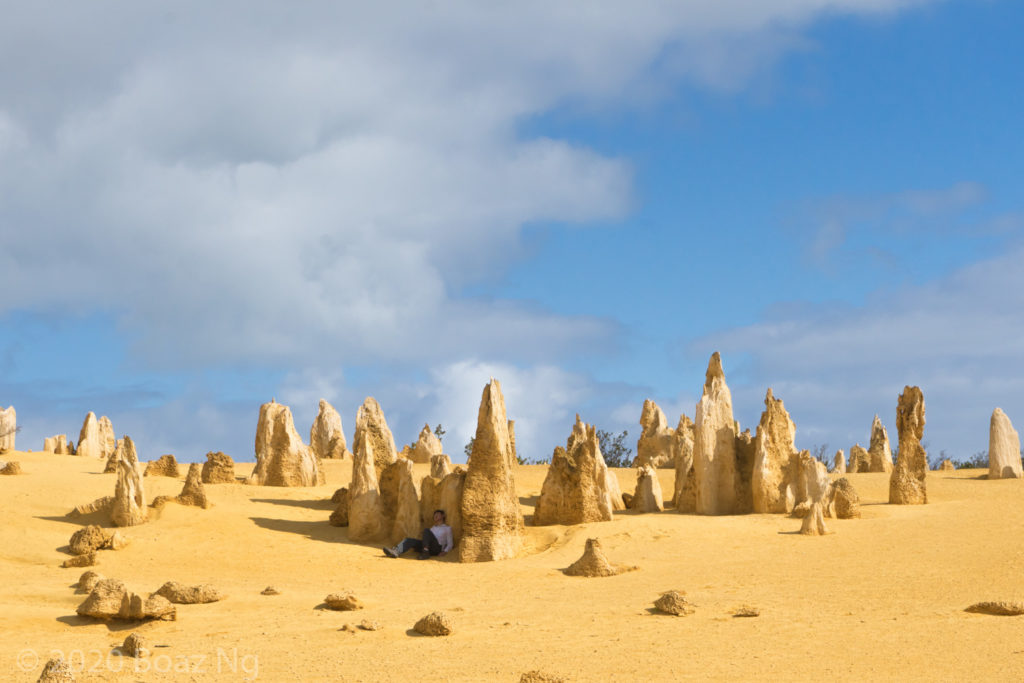
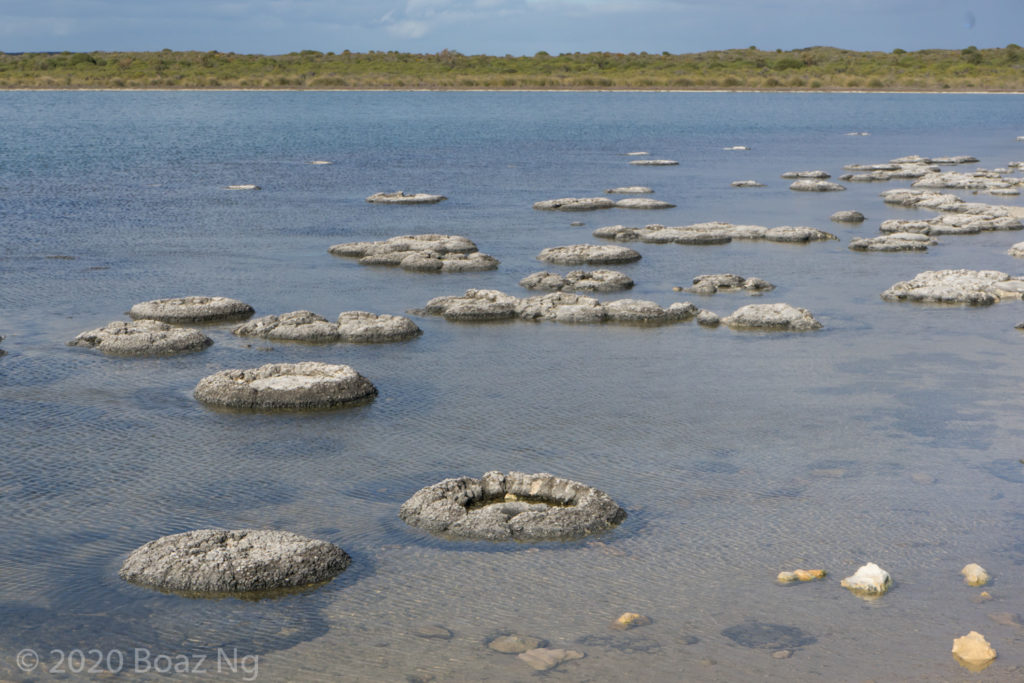
Having satisfied my thirst for Drosera hunting, I decided to check out the Pinnacles Desert, a tourist attraction composed of countless limestone pillars within a barren sand plain. I thought it would be a bit gimmicky but once I was there, I had a lot of fun taking photos in the alien landscape. After an hour or so, I made a quick pit stop in nearby Cervantes to have a look at the stromatolites in Lake Thetis. These ancient microbial structures were something I had always wanted to see after learning about them in my university classes.

As I ventured further north, I began to enter the Lesueur Sandplains bioregion. This area is characterised by deep sandy soils and ancient hills of laterised sedimentary substrates. I stopped at a small nature reserve east of Jurien Bay to see what I could find in the flatter niches of the area.
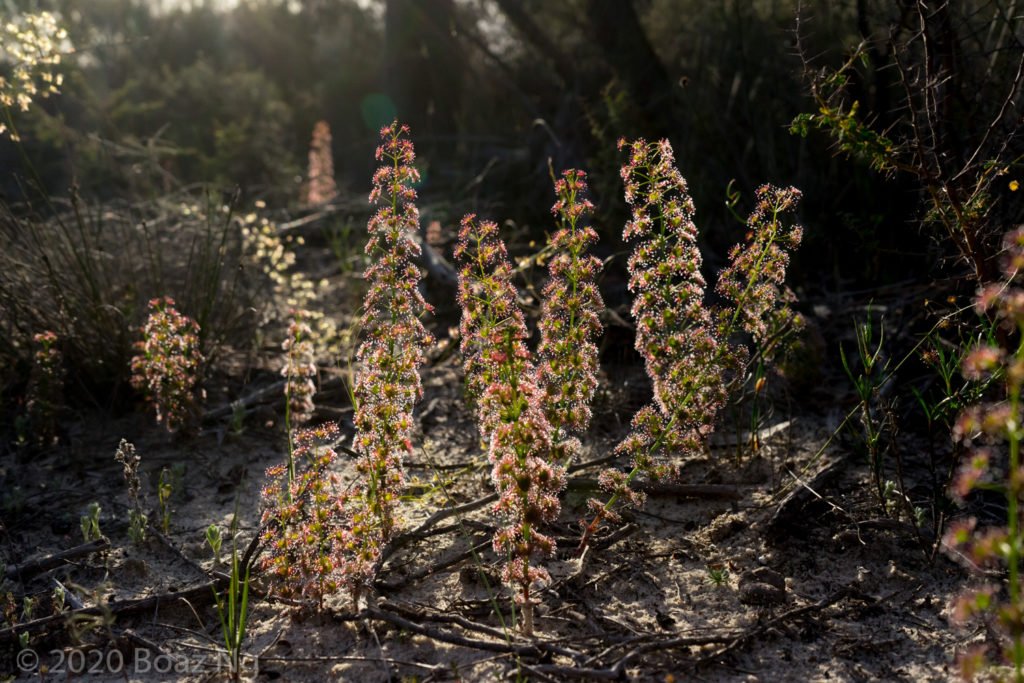
Drosera porrecta 
Drosera humilis
Everywhere along the sandy trail, I saw substantial rosettes of D. magna that grew as large as my hand. These plants must have been twice as large as the D. erythrorhiza growing in the Perth region! Robust stems of D. porrecta emerged from the ground with whorls of leaves decorating a central vertical stem. At this site, I found a nice patch of D. humilis which were at a more advanced growth stage and I was able to appreciate the thin stems which contrast it to other members in the stolonifera complex.
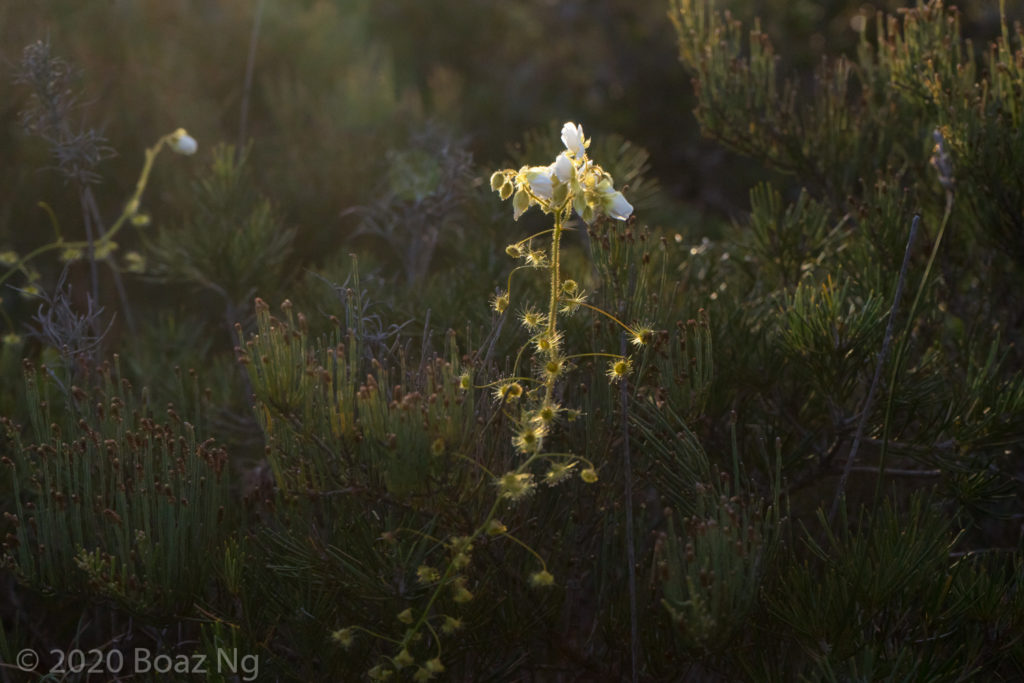
Drosera hirsuta 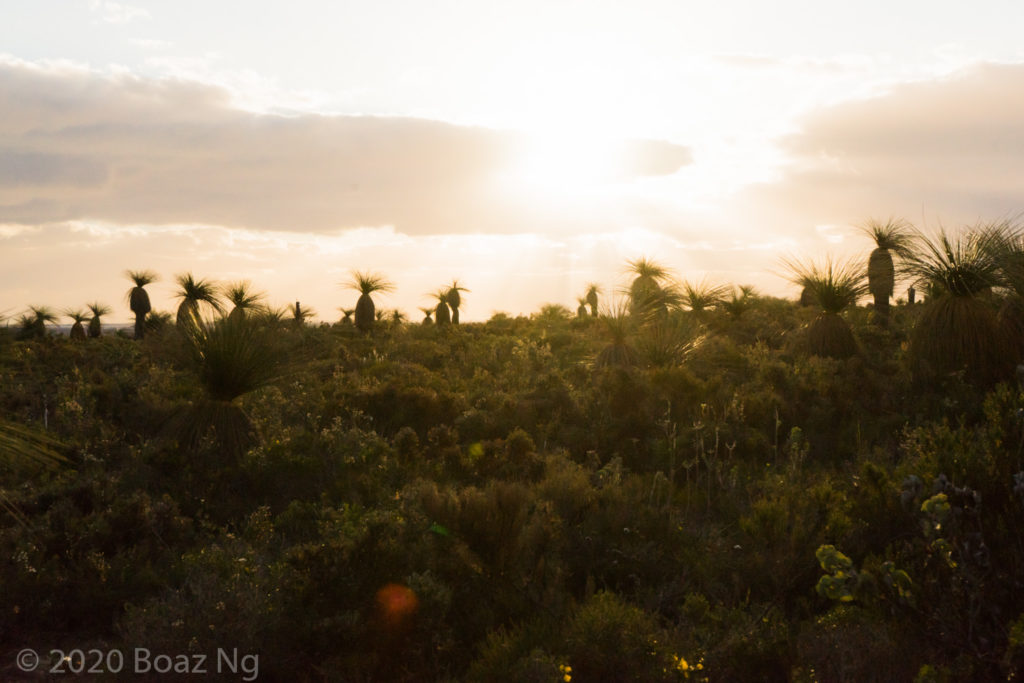
Mt Lesueur National Park
With the sun dipping low, I finally reached the Mt Lesueur National Park, a biodiversity hotspot with undulating lateritic topography. At a quick stop, I noticed that the warm evening light illuminated some particularly hairy scrambling sundews. It was not until after my trip that I identified the plants as D. hirsuta, a species distinguished by its dense covering of non-glandular hairs. After a camp stove meal, I had a quick poke around in the bushes but horrifically discovered that I was covered in blood sucking ticks! I spent a frankly uncomfortable night cramped into the back seat of a car with the imagined sensation of insects crawling all over me.
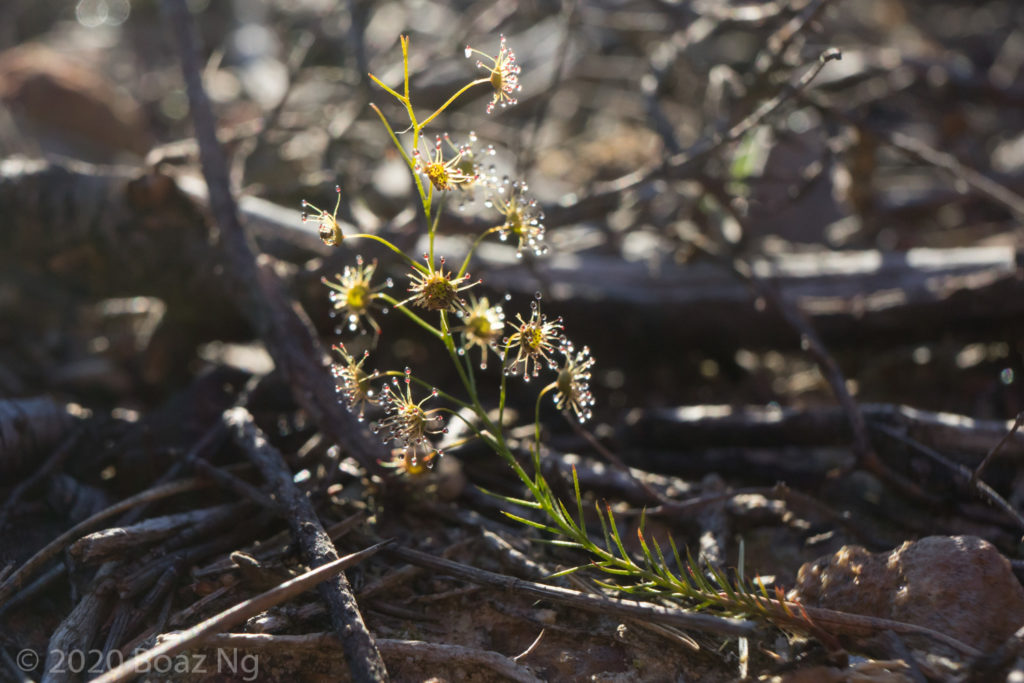
I arose the next day to summit Mt Lesueur, the low mesa for which the national park is named. Still paranoid about ticks, I was unfortunately unable to fully immerse myself in an exploratory mindset. I did however spot another new species, D. prophylla, an erect plant with numerous non-carnivorous bracts at its base.
After returning to the carpark and picking all the ticks off my clothes, I continued to other areas of the park in search of D. gigantea. I had hoped that the northerly location would result in a more advanced growth stage compared to those I had seen in the Perth Hills.
At the next stop, I glanced into the bushes and was surprised to see a few plants of D. gigantea in bloom! I was impressed by the large branching structure of the species, with flowers dotting the top of the plant like ornaments on a Christmas tree. The population was very sparse and didn’t photograph too well so I decided to leave the park to look for plants elsewhere.
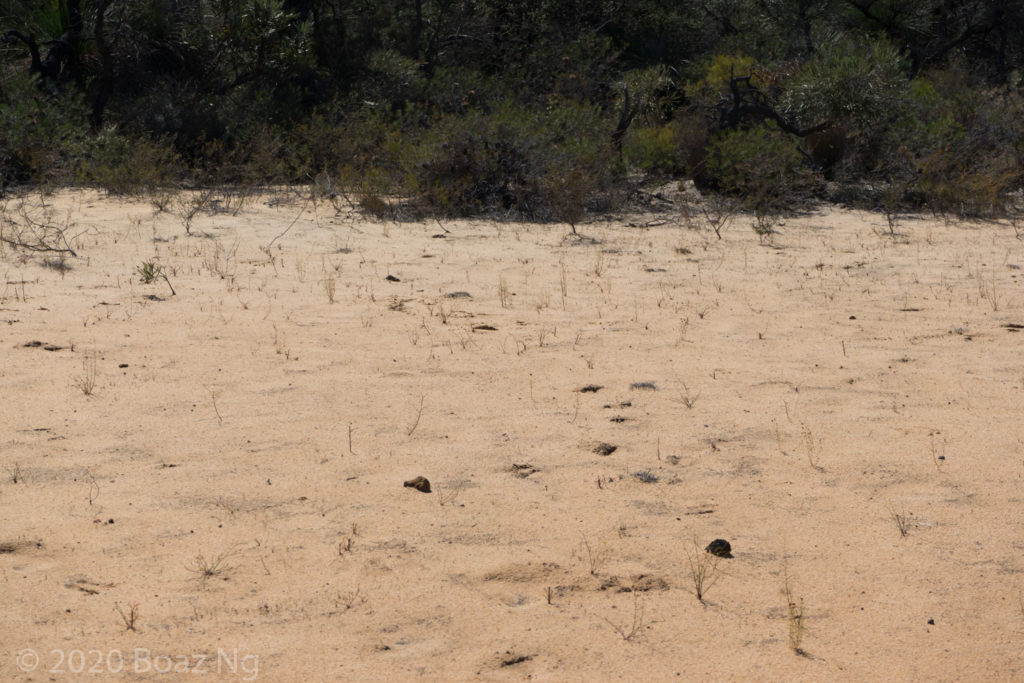
Scanning the satellite, I found a nearby trail that intersected a swamp channel. I thought that this would be a good place to find D. heterophylla, the only sundew that produces flowers with more petals than the usual five. I managed to locate a few of these plants but it was too late in the season and their distinctive flowers had already faded. I also noticed hundreds of D. gigantea in the sandy banks of the channel but I was disappointed to see that they were still in the early leafless growth phase! I couldn’t believe my poor luck, arriving at the wrong time to see neither species display their best characters.
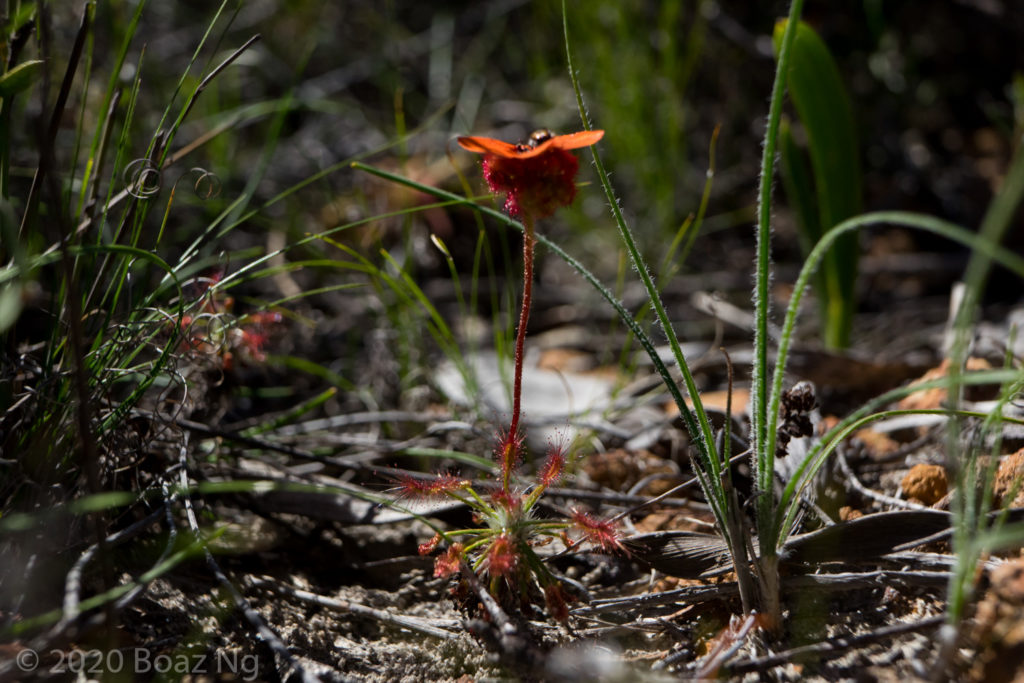
Not wanting to linger, I moved on to the next plant on my list – D. calycina, a crimson flowered species closely related to the orange flowered D. microphylla I had seen in the south. I found coordinates for a laterite hill that was not so far away. Although I didn’t see that species, I instead discovered the stunning rosettes of D. barbigera!

Drosera coomallo 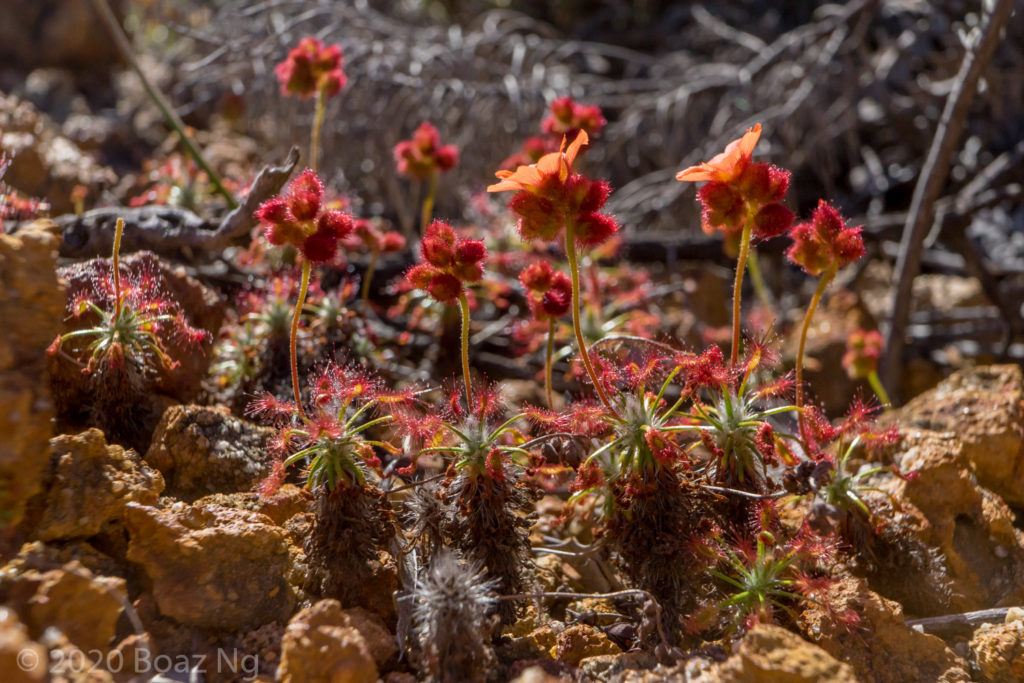
Drosera barbigera
Drosera barbigera is gargantuan in terms of pygmy sundews and embodies the most alluring characteristics of the group. It forms a large raised rosette that is elevated atop a long stem of old growth. The flowers are large and coloured a captivating metallic orange. The plateau at the top of the hill was covered with hundreds of these plants and I derived much enjoyment from photographing this very attractive species. Growing alongside was the comparatively demure flat-rosetted pygmy species D. coomallo. While not quite as spectacular as its cousin, its bright orange flowers do deserve an honourable mention.
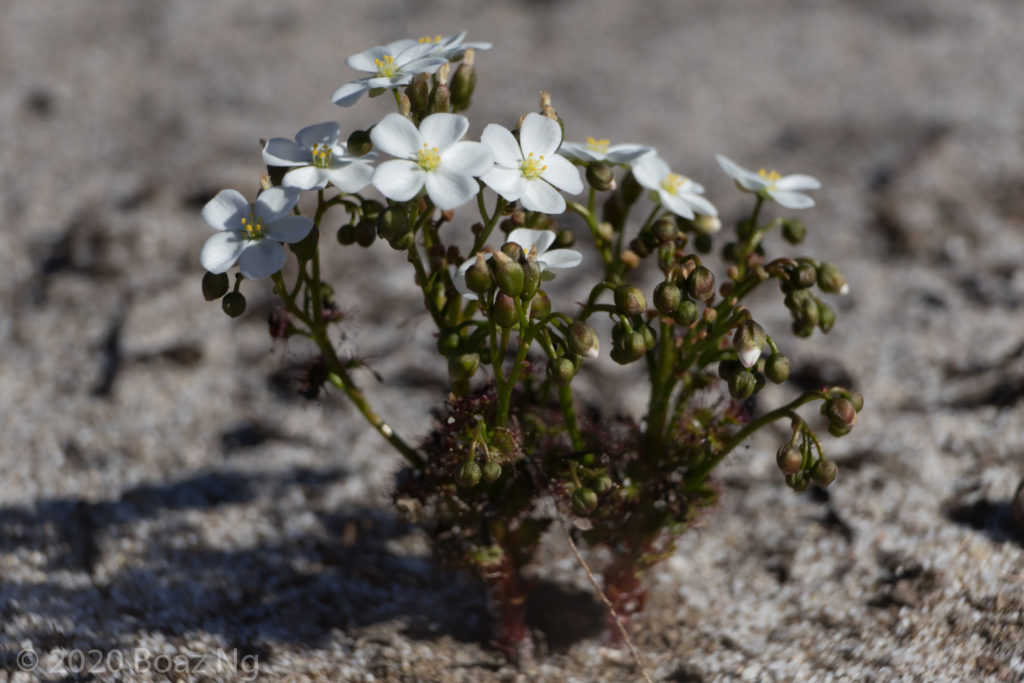
With half a day remaining and nothing else planned in the area, I decided to head even further north. Around Eneabba, the highway passed through a nature reserve which seemed to have been recently burned. This fire had left the area barren but had stimulated the D. porrecta there to flower. In lieu of the towering stem of leaves, these plants terminated in a large inflorescence of many white blooms.
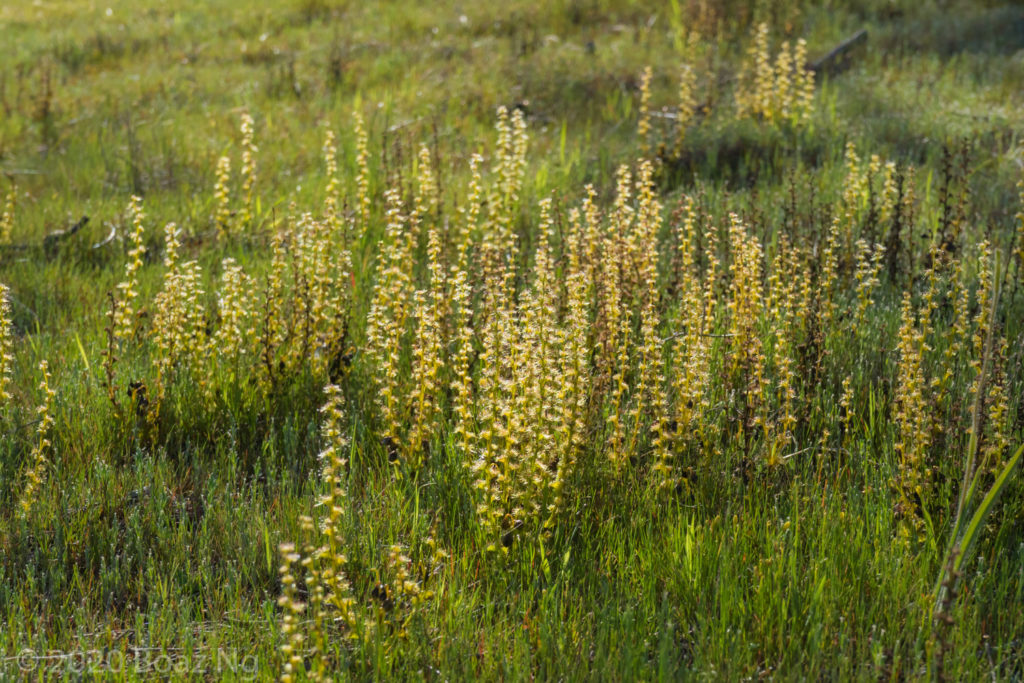
Moving onwards, I visited a small inland lake that was relatively accessible off the road. As I broke through the scrub, I noticed that the sunlight was caught in the dew of hundreds of D. ramellosa that grew in the lush grassy fields. It was a nice way to end a day of exploring and I drove to a seaside picnic area to watch the sun set and spend the night there.
By now, I was approaching the final days of my trip, so after another uncomfortable night in the car, I made my way back to Perth. Stopping by a few nature reserves along the outskirts of the city, I was disappointed to find that most of them were fenced off. Whilst this was frustrating, I do recognise that it is necessary to protect the rare species residing inside them.

